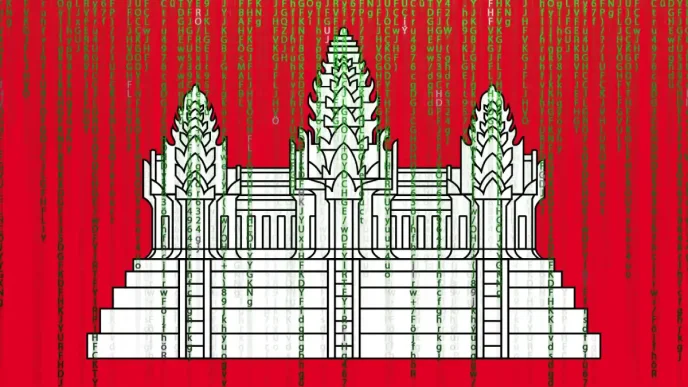Vietnam is set to make significant strides in both domestic reform and regional diplomacy in 2025, with plans to grant amnesty to over 8,000 prisoners and deepen economic ties with neighboring Cambodia. These dual initiatives reflect Hanoi’s broader ambitions to balance internal social policies with external economic growth, positioning the country as a stabilizing force in Southeast Asia. As the government navigates these parallel paths, questions linger about the long-term impacts on its justice system and regional influence.
Amnesty as a Gesture of Reform
In a move signaling a commitment to humanitarian reform, Vietnam’s government has announced that over 8,000 prisoners will be granted amnesty in 2025. This initiative, often tied to significant national holidays such as Lunar New Year or National Day, aims to reintegrate individuals into society while alleviating pressure on the country’s prison system. The amnesty is expected to include a range of offenders, though specific criteria—such as the nature of crimes or time served—have yet to be fully detailed by authorities.
Historically, Vietnam has used amnesties to mark political and cultural milestones, with similar releases occurring in previous years. For instance, in 2023, thousands were pardoned under similar circumstances, a policy often framed as a reflection of the state’s leniency and focus on rehabilitation over punishment. However, analysts suggest that such measures also serve a pragmatic purpose: reducing overcrowding in detention facilities and addressing international scrutiny over human rights practices.
While the government has not yet confirmed the exact breakdown of those to be released, local reports indicate that priority may be given to non-violent offenders, the elderly, and those with serious health conditions. “This is a chance for many to rebuild their lives” said a spokesperson from the Ministry of Public Security, emphasizing the rehabilitative intent behind the policy. Yet, questions remain about the reintegration process, with limited public information on support systems for former inmates, such as job training or social services.
Critics argue that while the amnesty is a positive step, it must be accompanied by broader judicial reforms to address systemic issues within Vietnam’s legal framework. Overcrowding, lengthy pre-trial detentions, and inconsistent sentencing practices have long been points of contention. If unaddressed, these challenges could undermine the goodwill generated by the amnesty, leaving the root causes of incarceration unresolved. For now, the initiative stands as a symbolic gesture, with its true impact hinging on implementation and follow-through.
Economic Ambitions with Cambodia
Parallel to its domestic reforms, Vietnam is intensifying efforts to bolster economic and trade ties with Cambodia, a relationship rooted in shared borders, history, and mutual interests. Recent high-level discussions between the two nations have focused on enhancing cross-border trade, infrastructure development, and investment opportunities, with both sides aiming to elevate bilateral trade to new heights by the end of the decade.
One of the key areas of collaboration is the facilitation of trade along the 1,270-kilometer border shared by the two countries. Vietnam, as Cambodia’s largest trading partner within the Association of Southeast Asian Nations (ASEAN), has expressed interest in streamlining customs processes and reducing tariffs on key goods. In 2024, bilateral trade reached approximately 27 trillion Vietnamese Dong (US$1.1 billion), with Vietnam exporting machinery, steel, and fertilizers, while importing cashew nuts, rubber, and timber from Cambodia. Both nations are now targeting a trade volume of US$20 billion by 2030, an ambitious goal that would require significant policy coordination.
Infrastructure projects also feature prominently in the discussions. The proposed expressway linking Ho Chi Minh City to Phnom Penh, if realized, could transform regional connectivity, cutting travel time and boosting the movement of goods. “We see this as a cornerstone of our economic partnership” said a Vietnamese trade official during recent talks. Cambodia, for its part, has welcomed Vietnamese investment in agriculture and energy, sectors critical to its development agenda.
Yet, challenges persist. Historical tensions, including border disputes and differing political systems, occasionally strain relations, while economic disparities between the two nations complicate negotiations. Vietnam’s more industrialized economy often overshadows Cambodia’s agrarian base, raising concerns in Phnom Penh about trade imbalances. Additionally, environmental issues—such as the impact of Mekong River projects on downstream communities in Cambodia—remain a point of contention, with activists urging both governments to prioritize sustainability over short-term gains.
Despite these hurdles, the commitment to cooperation appears strong. Joint initiatives, such as agricultural technology transfers and cross-border market access, are already underway, with pilot programs showing promise in rural areas. For Vietnam, strengthening ties with Cambodia also serves a strategic purpose, reinforcing its influence within ASEAN and countering the growing presence of other regional powers, such as China, which has deepened its footprint in Cambodia through infrastructure loans and investments.
Balancing Domestic and Regional Priorities
The simultaneous pursuit of prisoner amnesty and economic partnerships underscores Vietnam’s multifaceted governance approach. On the domestic front, the amnesty aligns with the Communist Party of Vietnam’s (CPV) narrative of social harmony, a key pillar of its legitimacy. By offering clemency, the state projects an image of compassion, potentially easing public discontent over issues like inequality or restricted political freedoms. However, without structural reforms, such measures risk being perceived as superficial, particularly if recidivism rates remain high or if released individuals struggle to reintegrate.
Regionally, Vietnam’s outreach to Cambodia reflects a pragmatic understanding of its geopolitical environment. As a mid-tier power in Southeast Asia, Hanoi seeks to solidify alliances with smaller neighbors to amplify its voice within ASEAN, especially on contentious issues like South China Sea disputes. Economic cooperation with Cambodia also diversifies Vietnam’s trade portfolio, reducing reliance on larger partners like China and the United States, whose relations with Hanoi are often shaped by broader strategic rivalries.
Yet, the interplay between these domestic and foreign policy goals is not without tension. Resources allocated to regional projects, such as border infrastructure, may divert attention from pressing internal needs, including prison system overhauls or social welfare programs for amnesty recipients. Public opinion, often shaped by state media, appears broadly supportive of both initiatives, though X posts from Vietnamese users reveal a mix of optimism and skepticism. Some praise the government’s humanitarian efforts, while others question whether economic deals with Cambodia will benefit ordinary citizens or merely enrich elites.
Looking Ahead: Reform and Regional Stability
As Vietnam moves forward with its 2025 agenda, the success of these initiatives will depend on execution and transparency. The amnesty program, while commendable, requires robust support mechanisms to ensure that released prisoners can rebuild their lives without returning to crime. Similarly, economic agreements with Cambodia must prioritize mutual benefit, addressing disparities and environmental concerns to sustain long-term goodwill.
For now, Hanoi’s dual focus on reform and regional ties signals a confident, forward-looking posture. Whether this translates into tangible progress remains an open question, one that will shape Vietnam’s domestic landscape and its standing in Southeast Asia for years to come. As these policies unfold, both citizens and neighbors will be watching closely, eager to see if promises translate into meaningful change.














